 W
WWriting is a medium of human communication that involves the representation of a language with written symbols. Writing systems are not themselves human languages ; they are means of rendering a language into a form that can be reconstructed by other humans separated by time and/or space. While not all languages utilize a writing system, those with systems of inscriptions can complement and extend capacities of spoken language by enabling the creation of durable forms of speech that can be transmitted across space and stored over time. It has also been observed that the activity of writing itself can have knowledge-transforming effects, since it allows humans to externalize their thinking in forms that are easier to reflect on and potentially rework. Writing relies on many of the same semantic structures as the speech it represents, such as lexicon and syntax, with the added dependency of a system of symbols to represent that language's phonology and morphology. The result of the activity of writing is called a text, and the interpreter or activator of this text is called a reader.
 W
WWriter's block is a condition, primarily associated with writing, in which an author is unable to produce new work or experiences a creative slowdown. This creative stall is not a result of commitment problems or the lack of writing skills. The condition ranges from difficulty in coming up with original ideas to being unable to produce a work for years. Writer's block is not solely measured by time passing without writing. It is measured by time passing without productivity in the task at hand.
 W
WMahogany L. Browne, is an American poet curator, writer, organizer and educator.
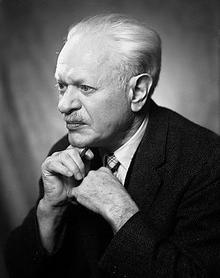 W
WKenneth Duva Burke was an American literary theorist, as well as poet, essayist, and novelist, who wrote on 20th-century philosophy, aesthetics, criticism, and rhetorical theory. As a literary theorist, Burke was best known for his analyses based on the nature of knowledge. Furthermore, he was one of the first individuals to stray away from more traditional rhetoric and view literature as "symbolic action."
 W
WThe term "chancery hand" can refer to either of two distinct styles of historical handwriting.
 W
WCodicology is the study of codices or manuscript books written on parchment as physical objects. It is often referred to as 'the archaeology of the book', concerning itself with the materials, and techniques used to make books, including their binding.
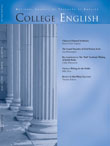 W
WCollege English is an official publication of the American National Council of Teachers of English and is aimed at college-level teachers and scholars of English. The peer-reviewed journal publishes articles on a range of topics related to the teaching of English language arts at the college level, including literature, rhetoric, critical theory, and pedagogy. It sometimes publishes special issues devoted to specific themes. Its content is accessible electronically via ERIC, ProQuest, and JSTOR, and is indexed by the MLA.
 W
WCourt hand was a style of handwriting used in medieval English law courts, and later by professionals such as lawyers and clerks. "It is noticeably upright and packed together with exaggeratedly long ascenders and descenders, the latter often and the former occasionally brought round in sweeping crescent shaped curves".
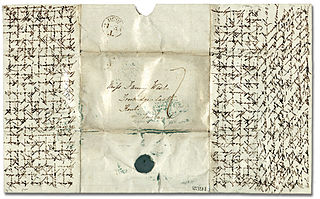 W
WA crossed letter is a manuscript letter which contains two separate sets of writing, one written over the other at right-angles. This was done during the early days of the postal system in the 19th century to save on expensive postage charges, as well as to save paper. This technique is also called cross-hatching or cross-writing.
 W
WCursive is any style of penmanship in which some characters are written joined together in a flowing manner, generally for the purpose of making writing faster, in contrast to block letters. Cursive handwriting is very functional, and is intended to be used in everyday writing. In addition, it is also used in art and calligraphy hand-lettering. Formal cursive is generally joined, but casual cursive is a combination of joins and pen lifts. The writing style can be further divided as "looped", "italic" or "connected".
 W
WAn essay is, generally, a piece of writing that gives the author's own argument, but the definition is vague, overlapping with those of a letter, a paper, an article, a pamphlet, and a short story. Essays have traditionally been sub-classified as formal and informal. Formal essays are characterized by "serious purpose, dignity, logical organization, length," whereas the informal essay is characterized by "the personal element, humor, graceful style, rambling structure, unconventionality or novelty of theme," etc.
 W
WEthos is a Greek word meaning "character" that is used to describe the guiding beliefs or ideals that characterize a community, nation, or ideology. The Greeks also used this word to refer to the power of music to influence emotions, behaviors, and even morals. Early Greek stories of Orpheus exhibit this idea in a compelling way. The word's use in rhetoric is closely based on the Greek terminology used by Aristotle in his concept of the three artistic proofs or modes of persuasion. It gives credit to the speaker, or the speaker is taking credit.
 W
WGraffiti is writing or drawings made on a wall or other surface, usually without permission and within public view. Graffiti ranges from simple written words to elaborate wall paintings, and has existed since ancient times, with examples dating back to ancient Egypt, ancient Greece, and the Roman Empire.
 W
WGraphology is the analysis of the physical characteristics and patterns of handwriting with attempt to identify the writer, indicate the psychological state at the time of writing, or evaluate personality characteristics. No scientific evidence exists to support graphology, and it is generally considered a pseudoscience or scientifically questionably practice. However, it remains in widespread use in France and has historically been considered legitimate for use in some court cases. The term is sometimes incorrectly used to refer to forensic document examination, due to the fact that aspects of the latter dealing with the examination of handwritten documents are occasionally referred to as graphanalysis.
 W
WGrundschrift is a simplified form of handwriting adopted by Hamburg schools, and it is currently endorsed by the German National Primary Schoolteachers' Union.
 W
WHypergraphia is a behavioral condition characterized by the intense desire to write or draw. Forms of hypergraphia can vary in writing style and content. It is a symptom associated with temporal lobe changes in epilepsy and in Geschwind syndrome. Structures that may have an effect on hypergraphia when damaged due to temporal lobe epilepsy are the hippocampus and Wernicke's area. Aside from temporal lobe epilepsy, chemical causes may be responsible for inducing hypergraphia.
 W
WHypertext is text displayed on a computer display or other electronic devices with references (hyperlinks) to other text that the reader can immediately access. Hypertext documents are interconnected by hyperlinks, which are typically activated by a mouse click, keypress set, or screen touch. Apart from text, the term "hypertext" is also sometimes used to describe tables, images, and other presentational content formats with integrated hyperlinks. Hypertext is one of the key underlying concepts of the World Wide Web, where Web pages are often written in the Hypertext Markup Language (HTML). As implemented on the Web, hypertext enables the easy-to-use publication of information over the Internet.
 W
WAn incunable, or sometimes incunabulum, is a book, pamphlet, or broadside printed in Europe before the 16th century. Incunabula are not manuscripts, which are documents written by hand. As of 2014, there are about 30,000 distinct known incunable editions extant, but the probable number of surviving copies in Germany alone is estimated at around 125,000. Through statistical analysis, it is estimated that the number of lost editions is at least 20,000. Around 550,000 copies of around 27,500 different works have been preserved worldwide.
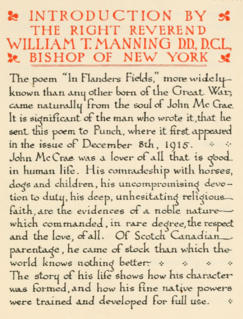 W
WIn an essay, article, or book, an introduction is a beginning section which states the purpose and goals of the following writing. This is generally followed by the body and conclusion.
 W
WKairos: A Journal of Rhetoric, Technology, and Pedagogy is a biannual peer-reviewed academic journal covering the fields of computers and writing, composition studies, and digital rhetoric. It was established in 1996, and was the first academic journal to publish multimedia webtexts.
 W
WLatrinalia is a type of deliberately inscribed marking made on latrines; that is, bathrooms or lavatory walls. It can take the form of art, drawings, or words, including poetry and personal reflections. Other types of latrinalia include political commentary and notes on love as well as derogatory comments and pictures. When done without the property owner's consent, it constitutes vandalism. Some venues have attempted to curb such vandalism by installing in the lavatory large blackboards and providing free chalk; it is hoped that patrons will avail themselves of the blackboard and chalk rather than applying their latrinalia directly to the walls or toilet stalls.
 W
WLiner notes are the writings found on the sleeves of LP record albums and in booklets which come inserted into the compact disc jewel case or the equivalent packaging for vinyl records and cassettes.
 W
WLiteracy is popularly understood as an ability to read and write in at least one method of writing, an understanding reflected by mainstream dictionaries.
 W
WManu propria, abbreviated to m.p. or mppria is a phrase sometimes used at the end of typewritten or printed documents when there is no handwritten signature. It is typically found just after the name(s) of the person(s) who would have signed the document if it had not been printed or typewritten.
 W
WMarginalia are marks made in the margins of a book or other document. They may be scribbles, comments, glosses (annotations), critiques, doodles, or illuminations.
 W
WNote-taking is the practice of recording information from different sources and platforms. By taking notes, the writer records the essence of the information, freeing their mind from having to recall everything. Notes are commonly drawn from a transient source, such as an oral discussion at a meeting, or a lecture, in which case the notes may be the only record of the event.
 W
WPalaeography (UK) or paleography is the study of historic writing systems and the deciphering and dating of historical manuscripts, including the analysis of historic handwriting. It is concerned with the forms and processes of writing; not the textual content of documents. Included in the discipline is the practice of deciphering, reading, and dating manuscripts, and the cultural context of writing, including the methods with which writing and books were produced, and the history of scriptoria.
 W
WPenmanship is the technique of writing with the hand using a writing instrument. Today, this is most commonly done with a pen, or pencil, but throughout history has included many different implements. The various generic and formal historical styles of writing are called "hands" while an individual's style of penmanship is referred to as "handwriting".
 W
WA polygraph is an author who writes in a variety of fields.
 W
WReflective writing is an analytical practice in which the writer describes a real or imaginary scene, event, interaction, passing thought, or memory and adds a personal reflection on its meaning. Many reflective writers keep in mind questions such as "What did I notice?", "How has this changed me?" or "What might I have done differently?" when reflecting.
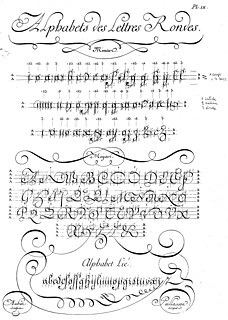 W
WRonde is a kind of script in which the heavy strokes are nearly upright, giving the characters when taken together a round look. It appeared in France at the end of the 16th century, growing out from a late local variant of Gothic cursive influenced by N. Italian Renaissance types in Rotunda, a bookish round Gothic style, as well as Civilité, also a late French variant of Gothic cursive. It was popularized by writing masters such as Louis Barbedor in the 17th century.
 W
WRound Hand is a type of handwriting and calligraphy originating in England in the 1660s primarily by the writing masters John Ayres and William Banson. Characterised by an open flowing hand (style) and subtle contrast of thick and thin strokes deriving from metal pointed nibs in which the flexibility of the metal allows the left and right halves of the point to spread apart under light pressure and then spring back together, Round Hand's popularity grew rapidly, becoming codified as a standard, through the publication of printed writing manuals.
 W
WRustic capitals is an ancient Roman calligraphic script. Because the term is negatively connoted supposing an opposition to the more 'civilized' form of the Roman square capitals, Bernhard Bischoff prefers to call the script canonized capitals.
 W
WSecretary hand is a style of European handwriting developed in the early sixteenth century that remained common in the sixteenth and seventeenth centuries for writing English, German, Welsh and Gaelic.
 W
WIn books and documents, a section is a subdivision, especially of a chapter.
 W
WThe semisoft sign is a letter of the Cyrillic script.
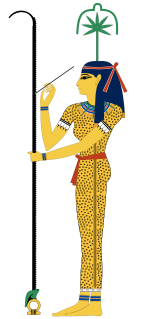 W
WSeshat, under various spellings, was the ancient Egyptian goddess of wisdom, knowledge, and writing. She was seen as a scribe and record keeper, and her name means she who scrivens, and is credited with inventing writing. She also became identified as the goddess of accounting, architecture, astronomy, astrology, building, mathematics, and surveying.
 W
WComposition studies is the professional field of writing, research, and instruction, focusing especially on writing at the college level in the United States. The flagship national organization for this field is the Conference on College Composition and Communication.
 W
WUncial is a majuscule script commonly used from the 4th to 8th centuries AD by Latin and Greek scribes. Uncial letters were used to write Greek, Latin, and Gothic.
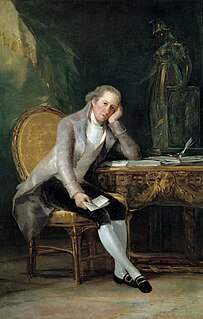 W
WA writer is a person who uses written words in different styles and techniques to communicate ideas. Writers produce different forms of literary art and creative writing such as novels, short stories, books, poetry, plays, screenplays, teleplays, songs, and essays as well as other reports and news articles that may be of interest to the public. Writers' texts are published across a range of media. Skilled writers who are able to use language to express ideas well, often contribute significantly to the cultural content of a society.
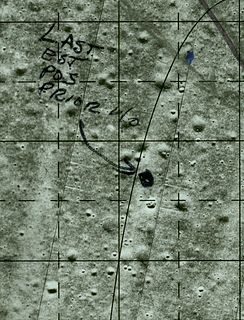 W
WSeveral instruments have been used to write in outer space, including different types of pencils and pens. Some of them have been unmodified versions of conventional writing instruments; others have been invented specifically to counter the problems with writing in space conditions.
 W
WWriting lines is a form of punishment handed out to misbehaving students by people in a position of authority at schools. It is a long-standing form of school discipline and is frequently satirised in popular culture.
 W
WA writing system is a method of visually representing verbal communication, based on a script and a set of rules regulating its use. While both writing and speech are useful in conveying messages, writing differs in also being a reliable form of information storage and transfer. Writing systems require shared understanding between writers and readers of the meaning behind the sets of characters that make up a script. Writing is usually recorded onto a durable medium, such as paper or electronic storage, although non-durable methods may also be used, such as writing on a computer display, on a blackboard, in sand, or by skywriting. Reading a text can be accomplished purely in the mind as an internal process, or expressed orally.
 W
WWriting therapy is a form of expressive therapy that uses the act of writing and processing the written word as therapy. Writing therapy posits that writing one's feelings gradually eases feelings of emotional trauma. Writing therapeutically can take place individually or in a group and it can be administered in person with a therapist or remotely through mailing or the Internet.
 W
WA written language is the representation of a spoken or gestural language by means of a writing system. Written language is an invention in that it must be taught to children, who will pick up spoken language or sign language by exposure even if they are not formally instructed.